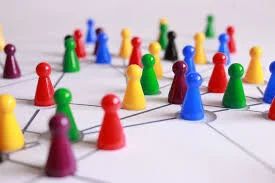Start With a Map If You Want to Reach Your Destination
Culture matters. Strategy and culture. Yet, many founders and CEOs focus on developing, designing, and communicating the strategy, while leaving their company culture to evolve and expand effortlessly and organically.
But, culture doesn’t scale naturally. If you are smart enough to be intentional about your culture, where do you start?
Culture Mapping
There is more than one way to go about this. I like Dave Gray’s approach developed with Alex Osterwalder. Appreciating there is an organic element, it focuses on intentional design. You can download the map here.
He breaks this exercise into 3 parts. Outcomes, Behaviors, and Enablers & Blockers. Notice the word “values” is missing from this framework.
Values underline behaviors and behaviors are your culture, but this offers a different starting point. With “values” many stop at the nice, feel-good list. On The Transformative Leader Podcast, hosted by Amir Ghannad, guest Brett Putter, Founder & CEO, CultureGene said when you ask CEOs about their culture, they list their values. Culture is a bit more elusive and changes as you scale (full episode here).
# 1 Outcomes
Tangible results. Gray notes they are often expressed in terms of time and money. From another angle, it’s what you want and don’t want your culture to achieve. I paused here when I read that. For example, you don’t want team members to perform poorly. You want people to be happy at work. That is different from business outcomes per se (but when talking implementation, you can get detailed and come up with metrics).
# 2 Behaviors
These are the specific, concrete, observable actions people take every day. If you were a fly on the wall, what would you see and hear.
Yes, values underline your behaviors, but values leave too much room for interpretation. It may be influenced by family, the culture you grew up in, or experiences you have had at prior jobs.
Take any easy concept “great customer service”. What does that look like in practice? Listening to a podcast, with guest Ariel Kaye, Funder of Parachute, she talked about how important it was to go into her stores and really show and teach what great customer service meant to her. She wanted her team to be brand ambassadors, able to educate and engage with customers – not just sell product. That was her definition of great customer service.
To get even more granular, behaviors can be broken into three buckets: the individual, the team, and leadership. Some examples, for the individual – takes ownership; the team – collaborates and is open and honest; at the leadership level – actively listens.
Other desirable behaviors might include: we act on data, not opinion (careful not taken to an extreme!), celebrate failures, or provide timely, specific feedback.
# 3 Enablers & Blockers
Here is where you can play the most. You can experiment. You have the most impact on your culture. These are the levers that influence the behaviors and outcomes. What enables and blocks the behaviors you want to see?
These can be formal like incentives, rules, and procedures. Or, informal, for example, unwritten rules, habits, norms, and routines.
One approach is to break these into 4 elements: Incentives, context and rules, people, and leadership.
Incentives can be (the obvious) fair and competitive pay (equal pay!), bonuses, and promotions. Brett Putter suggested an employee of the month program. He was talking about the ability to measure culture so you can manage it. With this initiative you could track how many people voted, who voted, and month-over-month growth in the number of people nominated.
Context and rules could be policies around flexible work schedules (hello COVID). People is about processes for identifying, hiring, developing talent. Leadership, walk the talk!
Design is an exercise, one to be revisited as your reach different stages of growth, but the true value of a strong culture is derived from successful implementation. Implementation starts with communication.

